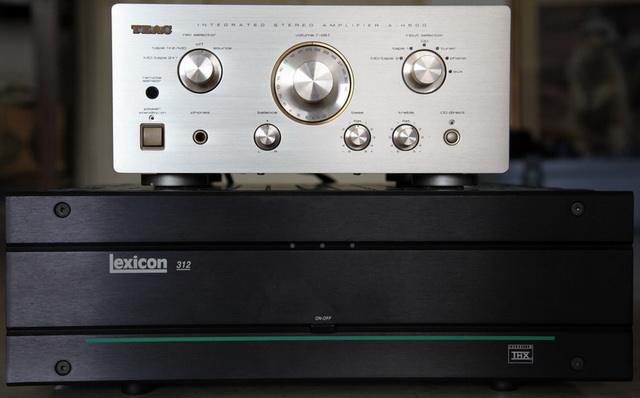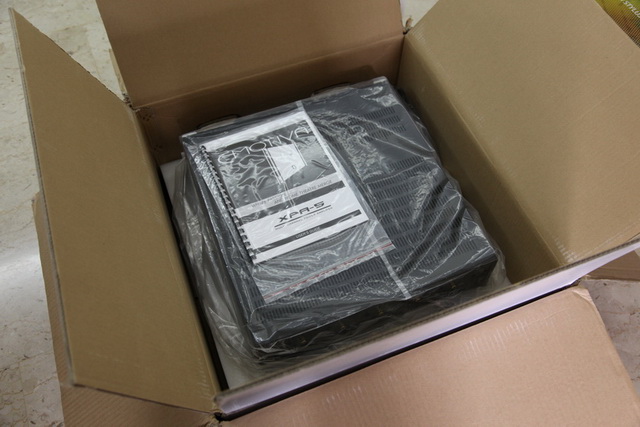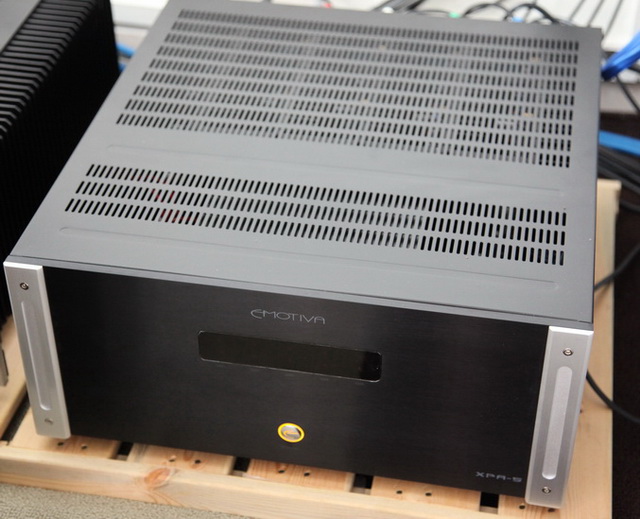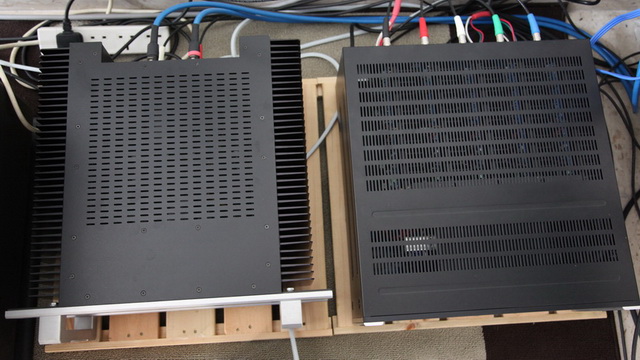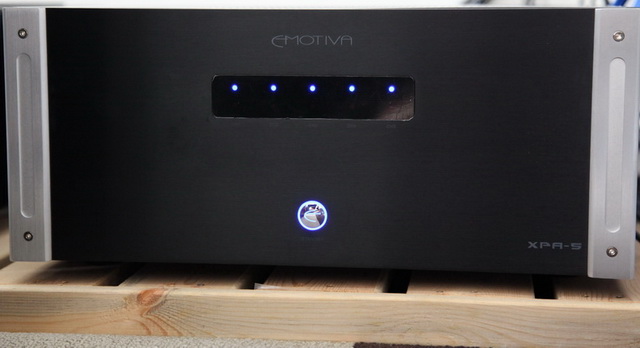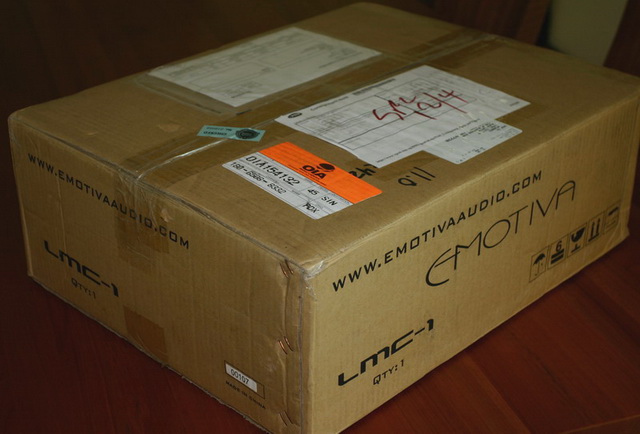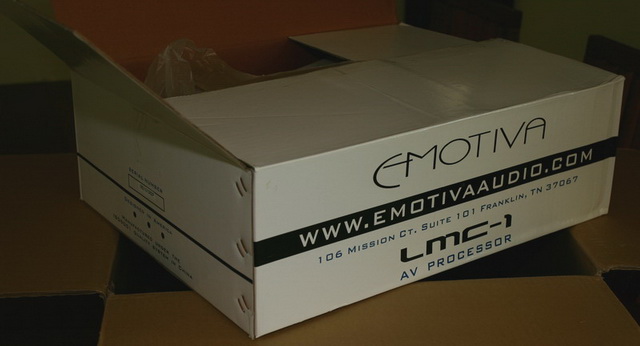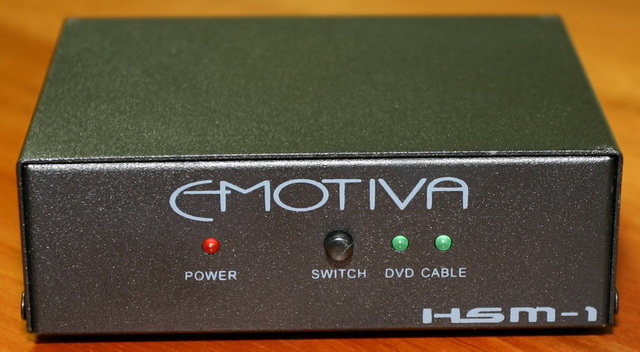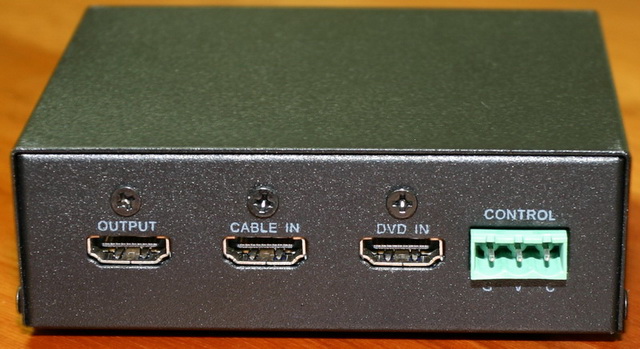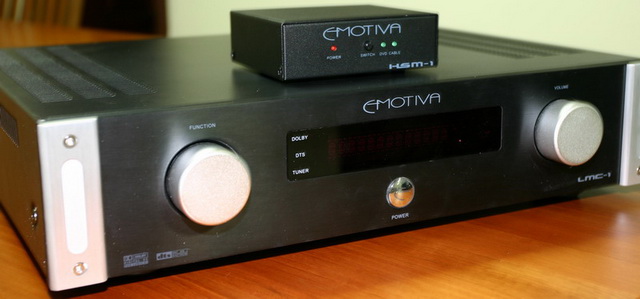Background
I’ve been using three amplifiers to power all speakers since getting support for a 7.1 speaker setup by upgrading from my old Sony AVR to my Emotiva LMC-1 processor. Well ok, four amplifiers if you include the SVS sub’s built-in amplifier.
I was thinking that it seems rather pointless to take up valuable rack space and power plugs with two amplifiers when I could get one five channel amplifier to replace both my Lexicon 312 power amplifier and a Teac A-H500 integrated stereo amplifier. Not to mention less hassle, as I would not have to set the integrated amplifier at the right volume point to match the power amplifier and make sure it was on the right input if it was switched off from the wall (it forgets the settings).
Happy with my experience with the Emotiva LMC-1, I was hoping to order a next generation processor and a five channel amplifier from them this year. Unfortunately there have been long delays in releasing the next generation processors due to the lack of availability of some critical integrated circuits.
A couple of other forum members at Xtremeplace.com were also eyeing some Emotiva gear, so three of us combined forces in the hope of saving on the shipping. I picked up mine yesterday (Dec 28, 2008) from DanDon’s place at Jurong West. Thanks to Dan for organising the order!
Out with the old then and in with the new!
The combined box and amplifier weight is nearly 40kg, so I took a trolley to Dan’s place to pick it up. A very worthwhile investment!
The amplifier is double boxed and well insulated from shocks with snugly fitting foam packaging.
Emotiva XPA-5 in standby mode
Bryston 14B ST on the left and Emotiva XPA-5 on the right
Emotiva XPA-5 powered on.
Watch the power on sequence on YouTube. You can watch it in HD on YouTube too.
As you can see from the photos above I have another power amplifier, my Bryston 14B ST, to power my main LR speakers while the Emotiva XPA-5 powers the remaining five speakers in my 7.1 setup.
I’m a bit lazy so I have not labelled my cables and in the excitement didn’t bother remembering the colours of the cables when I disconnected the other amplifiers. That meant it would be hit or miss when I reconnected everything. Of course I got it wrong. I noticed the bullets flying in weird directions on my favourite test scene, The Matrix lobby shoot out. I was a bit too keen to hear how it sounded and suffered the consequences. I grudgingly went off to get my sound meter and played the test tones from the Emotiva processor for a quick confirmation that everything was in order. I had both the side surround and rears around the wrong way!
Home Theatre Test
Now let’s be honest here – the time it took me to unplug everything, assess how many AMPs were going to be drawn from each socket/power board and moved the amplifiers in and out was far too long for a reliable comparison. The Lexicon amp is no slouch (it’s really a re-badged Bryston), and the Teac was only doing the rears anyway. However, I did feel that there was better integration in the sound, which is strange given the Lexicon is a Bryston. I also felt that there was more detail and clarity in the scene. I do not think there is a light and day difference, but that was not my intention anyway. I just wanted to clean things up and make sure I got a decent amplifier to replace my other two amplifiers and the Emotiva has performed that task easily.
Stereo Test
Both the Bryston 14B ST and the Emotiva XPA-5 have RCA and balanced inputs which can be set with a simple flick of a switch on the rear of the amplifier for each channel. I decided to use my Benchmark DAC-1, with the balanced outputs, to test the stereo performance of both amplifiers.
Again, it is not a straight forward task to switch bare wire connections and the balanced cables from one amplifier to another, so in the time it takes I’m sure my “sound memory” fades. Combining this with construction noise and a howling wind probably didn’t make for the best listening environment either. Hopefully DanDon and Quest from Xtremeplace can come over soon and we can have more ears and brains to make an assessment.
I played some tracks that I’m familiar with and found both amplifiers to perform similarly, which is a feat in itself for the Emotiva to compare favourable with the Bryston. Like both DanDon and Quest I found the Emotiva to be a little more harsh than I would have preferred. I would even say in one part of a song with some thumping bass that the Emotiva seemed to deliver a more defined bass note than the 500W+ per channel Bryston. However, It is the kind of track where you need to go back and forth to compare a few times and I just didn’t have the time with a guest coming for dinner.
Conclusion
I will have to wait for a quieter evening with some fellow Xtremeplace forumers to compare the Bryston and Emotiva amplifiers in more detail. For now I can say that for the price the Emotiva XPA-5 is an excellent amplifier for home theatre and will do a very good job in stereo too.
I now have seven channels of high power amplification with unbalanced and balanced connections ready to go into action. All I need is the new processor from Emotiva with balanced outputs and I’ll be a very happy man for a few years at least. In the meantime I’ve cleaned up my setup while at least maintaining, if not improving, the overall sound quality of my home theatre experience.
Now I just need to fix this horrible room!

